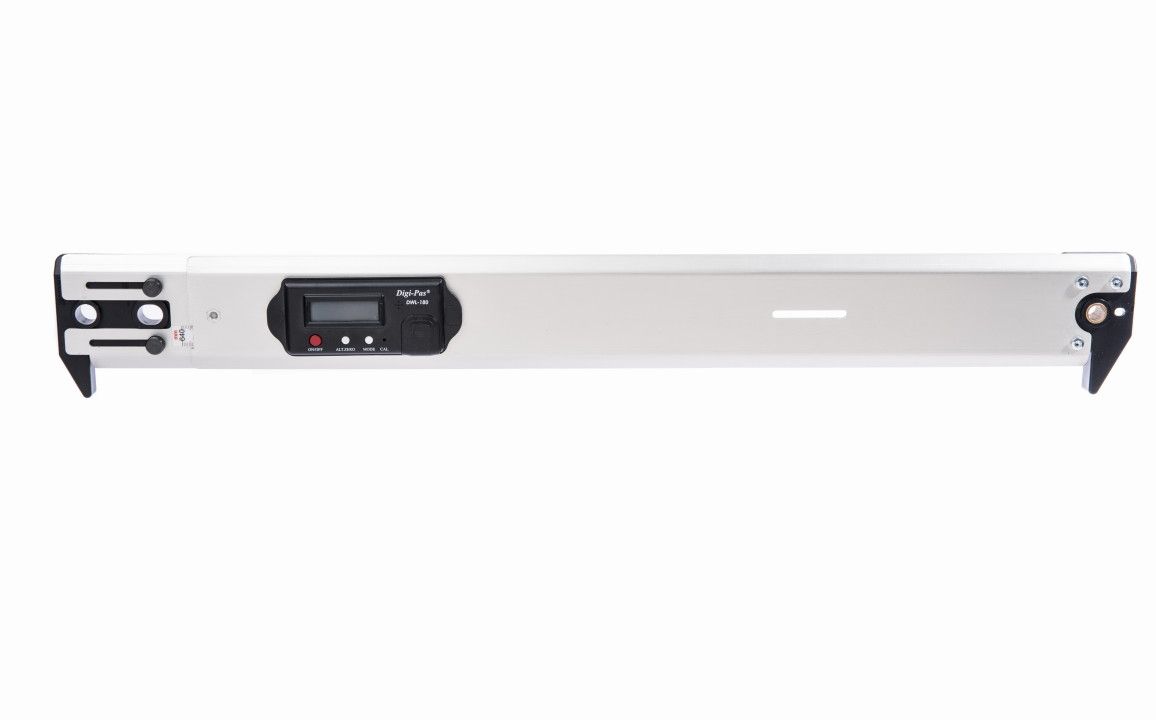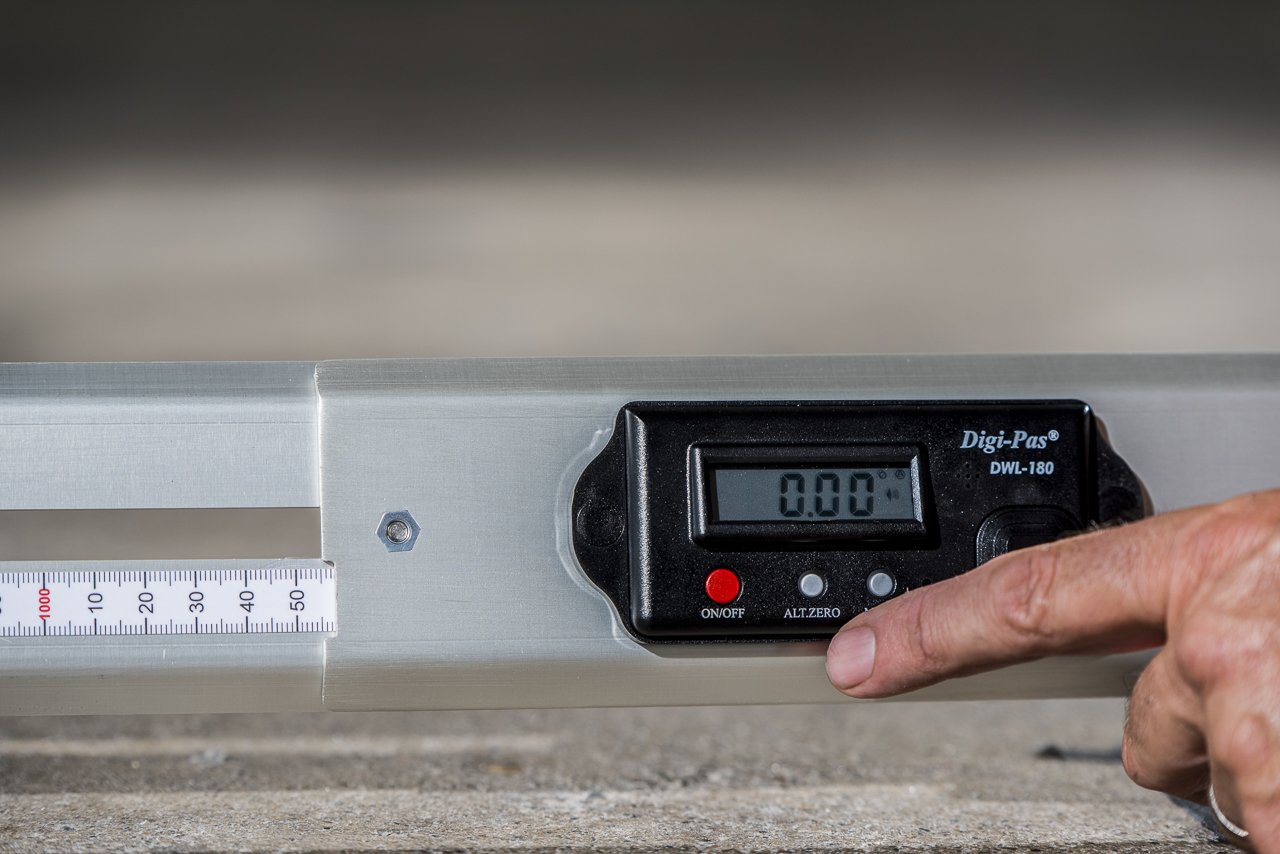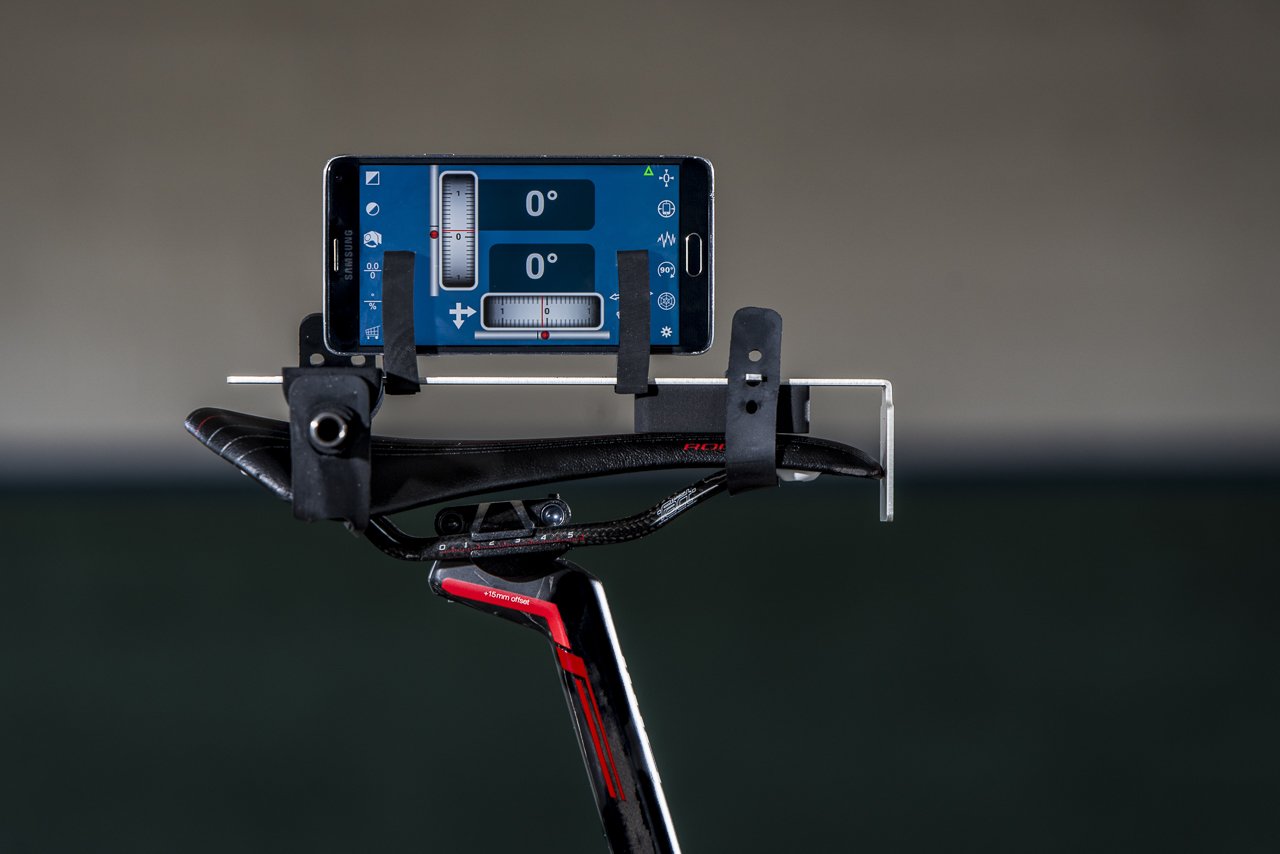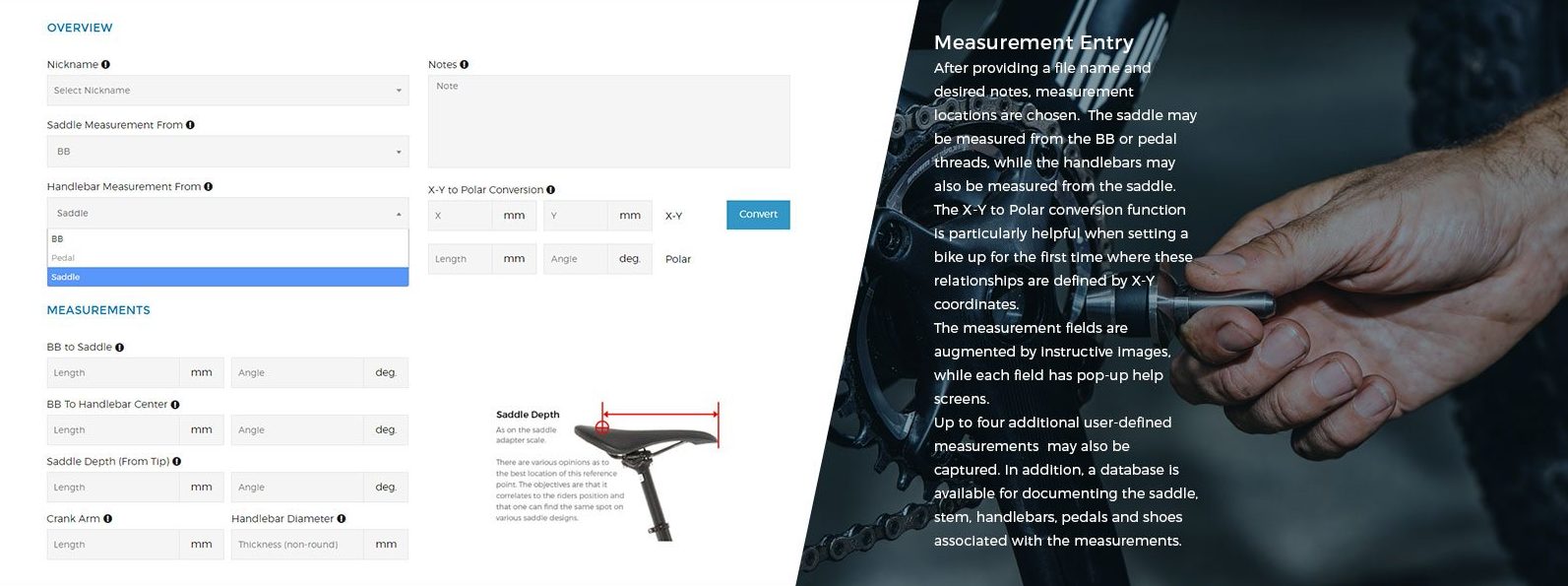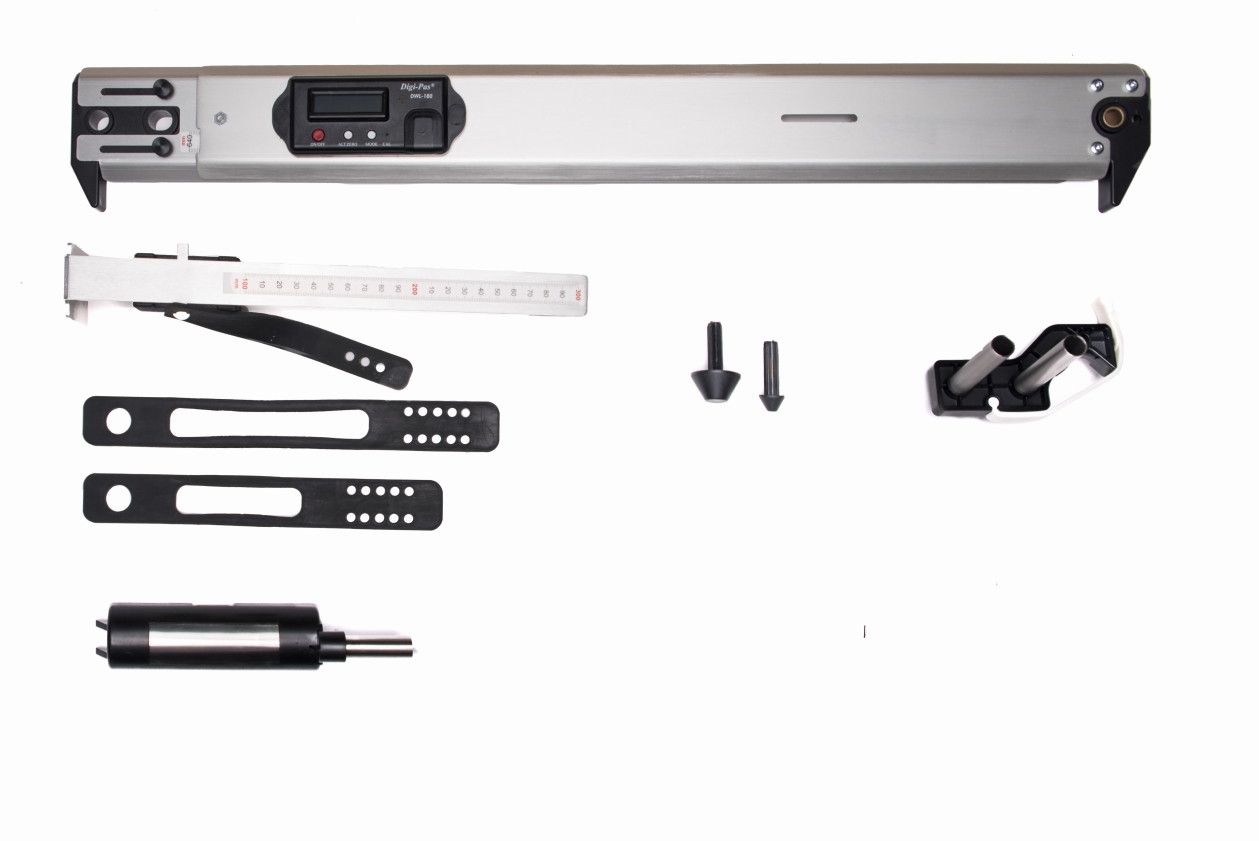A lot of time and effort usually goes into a professional bike fit. Or maybe, you’ve just spent months fine tuning your fit on your own and finally have it dialed in. Whatever the case, if it’s time to transfer that fit to a new bike, VeloAngle has a better way.
Not only has VeloAngle developed an entire new tool for the job, they’ve also created a new technique. While most fitters are accustomed to measuring things in terms of X – Y, VeloAngle claims that this requires two separate measurements with the possibility of error. Instead, VeloAngle uses what’s referred to as the Polar measurement, or length and angle of touch points relative to the fixed point on the bottom bracket. The result is the ability to measure between two points in a single step.
Additionally, the VeloAngle Pro has an Alt Zero function that sets the reference plane at wheel contact points or axles, even if the bike isn’t level. This allows for the position to be recreated even if the bike is in a stand, rack, or other situation that isn’t level.
Additional accessories are available to allow for saddle height, setback, and tilt to be measured all at once. The theme of the tool seems to be removing the possibility of error introduced when you have to reposition the tool or perform measurements separately. Accessories also include an expanding crank adapter or Shimano Hollowtech II adapters to provide a fixed measurement point at the BB which makes the saddle and handlebar adapter straps unnecessary.
Measurements can be plugged into their app which converts X – Y measurements to Polar, and it allows you to log information such as the exact components used in the build of multiple bikes. Currently, the app is provided as part of a subscription with both limited and unlimited plans. The limited plans have a set number of sessions that can be saved, though limited sessions can be run. Pricing varies from a $14 one month trial to a year of unlimited for $59.
Available in two models, the VeloAngle Pro (top) includes the Digi-Pas 180s digital inclinometer and sells for $279.
Contents
- VeloAngle with inclinometer
- Saddle Adapter assembly
- Handlebar Adapter Assembly
- BB/Crank Centers (small and large)
- Engineered reusable packaging with organizer
Specifications
- VeloAngle measurement range: 648 – 1158 mm, resolution 1 mm
- Saddle adapter measurement range: 100 – 300 mm, resolution 1 mm
- Angle measurement range: +/- 90°, resolution 0.05°
Materials
- Main Body: 5052 H32 Aluminum, brushed and clear anodized
- Molded Housings: PC/ABS engineering thermoplastic and engineered thermoplastic elastomer for high impact resistance and molding accuracy
- Molded Bushing and Shim: Acetal Copolymer for high creep resistance and low friction
- Guide Tubes: 304 stainless steel tubing centerless ground to eliminate clearance with mating housings and ensure accurate measurements.
- Measuring Scales: Both main and saddle adapter scales are laminated with a 3mm Lexan overlay for the ultimate in wear resistance.
The VeloAngle Enthusiast removes the digital inclinometer and instead relies on the user’s own cell phone to run a number of apps to provide the angle reading. Otherwise, it offers the same functionality as the Pro.
Contents
- VeloAngle
- Saddle Adapter assembly
- Handlebar Adapter Assembly
- BB/Crank Centers (small and large)
- Engineered reusable packaging with organizer
Specifications
- VeloAngle measurement range: 648 – 1158 mm, resolution 1 mm
- Saddle adapter measurement range: 100 – 300 mm, resolution 1 mm
Materials
- Main Body: 5052 H32 Aluminum, brushed and clear anodized
- Molded Housings: PC/ABS engineering thermoplastic and engineered thermoplastic elastomer for high impact resistance and molding accuracy
- Molded Bushing and Shim: Acetal Copolymer for high creep resistance and low friction
- Guide Tubes: 304 stainless steel tubing centerless ground to eliminate clearance with mating housings and ensure accurate measurements.
- Measuring Scales: Both main and saddle adapter scales are laminated with a 3mm Lexan overlay for the ultimate in wear resistance.
VeloAngle is now fulfilling individual orders through their website with additional support and full production capability on the way.
